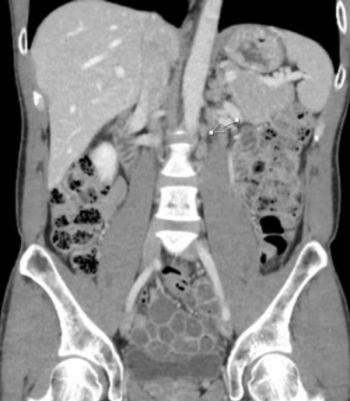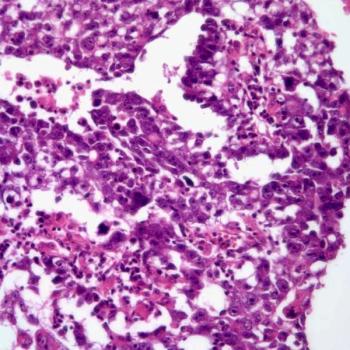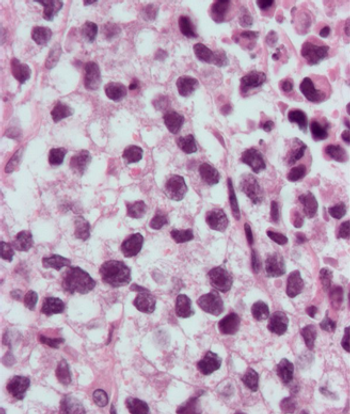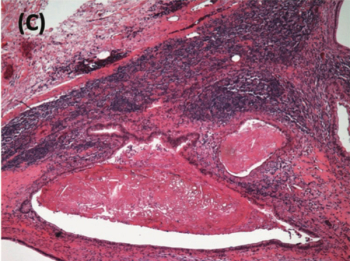
Oncology NEWS International
- Oncology NEWS International Vol 4 No 10
- Volume 4
- Issue 10
Outreach Program Improves Oncologic Care for Rural Population, Reduces Cost
Medical College of Virginia-Virginia Commonwealth University, and Virginia Commonwealth University School of Health Administration.
ABSTRACT: Medical College of Virginia-Virginia Commonwealth University,and Virginia Commonwealth University School of Health Administration.This article, in which Drs. Smith and Desch describe a programthat brought quality oncologic services to rural residents andlowered the cost of care, is the first in an occasional seriesentitled Innovations in Care. We invite physicians involved in innovative, cost-saving programsfor delivery of oncologic care to contact us about a possiblearticle for this series.
RICHMOND, Va-To help improve cancer care in rural areas of Virginia,we developed a strategic alliance[1], known as the Rural CancerOutreach Program (RCOP), a network of an academic center providingtertiary oncology services with rural hospitals needing new services,to meet the needs of both parties.
One quarter of Americans live in rural areas, and these areashave higher cancer mortality time trends than do urban and suburbanareas[2]. Rural areas are often medically underserved, and thepopulation often has poor access to both primary and specialtycare.
A number of socioeconomic factors also play a role in excess cancermorality in rural areas, including unemployment, poor education,poor health habits, especially cigarette smoking, and lack ofhealth-care insurance[3].
Options for rural cancer patients are limited. Healthier, wealthierpatients can travel to urban centers for both primary and specialtycare. Each patient typically makes 6 to 12 trips to the academiccenter for treatment, traveling 100 miles each way at a cost of$60 per visit.
Those unable to make the trip due to lack of money or poor health,or unwilling to seek care due to outdated beliefs about cancertherapy [4], may encounter a rural system with insufficient experienceto provide state-of-the-art care.
In general, rural health care is pro-vided by older general practitionersand hospitals of variable quality [5-8]. The socio-economic characteristicsof rural populations mentioned above have also been strongly correlatedwith poor outcomes of medical care [9].
Massey Cancer Center-Medical College of Virginia Hospital (MCC-MCVH)is the Rural Cancer Outreach Program's academic center. Locatedin an urban community, this 1,100-bed hospital has full oncologiccapability.
The three rural oncology clinics are situated in 80- to 100-bedhospitals that each serve three to five counties with a populationof 50,000 to 80,000. The Massey Cancer Center nurses and physicianstravel every 2 weeks to the sites, each located about 100 milesaway.
An intense training program, given at the beginning of the program,includes a week-long course for rural oncology nurses. The ruralnurses come to the academic center to learn "hands on"the care of cancer patients.
Tumor boards held at least once a month allow the oncologiststhe opportunity to review with the rural physicians the treatmentof common cancers and complications of treatment. In addition,we use the technique of "academic detailing," or providinginformation on a one-to-one basis to the physicians who requestconsultations.
The rural physicians provide care in between the oncologists'visits, using standard MCC-MCVH practice guidelines, policies,and procedures. An MCC-MCVH physician and nurse are on call 24hours a day to answer any telephone consultations.
In practice, cancer diagnoses are made at the rural hospital bya family physician or surgeon. Staging is done after telephoneconsultation between the oncology nurse at the rural site andthe oncologists at the Massey Cancer Center, or by standard protocol.An outpatient oncology consultation takes place during the oncologist'sbiweekly visit, to finalize the diagnosis and treatment plan.
The rural nurse administers chemotherapy and does much of theintermediate care, with the MCC-MCVH nurse providing support forapproximately 75% of all patient visits. The rural physiciansmanage complaints in between the oncologist's visits and havenow assumed responsibility for nearly all palliative care.
We audited charts at the first RCOP site after 3 years of operation(post-RCOP) and compared results to those from 2 years pre-RCOP.We audited morphine consumption from 1985 to the present at oneRCOP site, and performed a financial analysis of patients fromtwo RCOP sites.
We reviewed care of patients pre- and post-RCOP at one rural sitefor three important clinical indicators: (1) breast cancer treatment,since variation is common and important [10,11]; (2) clinicaltrial accrual for adjuvant therapy; and (3) pain management, sinceit
is often poorly done [12,13].
The number of patients who have tumor size recorded has improvedby a dramatic 100% (from 29% to 59%). Breast conservation hasincreased from 20% to 70%, and the percentage of patients withstage I or II breast cancer at diagnosis has gone up (from 59%to 79%).
Clinical trial accrual has increased. The percentage of patientsreceiving all their therapy at the rural sites has increased tonearly 100%. Compliance with adjuvant chemotherapy is essentially100%. Virtually all palliative care is given at the rural site,as is 100% of chemotherapy for Hodgkin's and non-Hodgkin's lym-phomaand testicular cancer.
Morphine consumption at the rural hospital was audited as an exampleof palliative care. In the years prior to RCOP, there were noinhospital prescriptions written for oral or intravenous morphine.In the subsequent 5 years, there has been a 500% to 700% increasein oral and IV morphine use, from none to adequate levels.
Financial Analysis
The program has increased the number of cancer patients at MCC-MCVHby 330% and noncancer patients by 9%. The number of patient visitsfrom the rural areas to MCC-MCVH has dropped from 4.7 to 2.1,a 45% decrease.
The total revenue increase for MCC-MCVH has been only 6% on avolume increase of 330%, because of declining reimbursement atthe academic center as well as the shift of services to the outpatientarea. However, the contribution margin, or amount the programgenerates toward program expenses, has increased by 32%; net profitshave increased by 68%.
For each rural hospital, the number of patients has increasedby a substantial amount, to about 100 new patients each year.The rural hospitals have generated substantial revenues, profitsof approximately $500,000 per hospital per year. This has beenused to support other less financially viable activities and isa critical component of the hospitals' financial structure.
Most striking is the reduction in cost to society. Using estimatedreimbursement as an index of cost to the health-care system, thecost of taking care of a patient in the strategic alliance networkhas decreased significantly.
The hospital charge of a rural cancer patient admitted to MCC-MCVHhas dropped by 40%. During this same time period, the hospitalcharge of an urban cancer patient admission increased by 2%, andoverall hospital charge per cancer admission increased by 52%.The cost per patient has decreased by 62%, from $10,233 to $3,862.
The reasons for the financial benefit of the RCOP include a shiftto outpatient services and more efficient care, as documentedby the 40% decline in charges per admission. Much of the reductionhas been achieved by shifting care from the higher priced urbansite to the lower cost rural site. In addition, there are moreprimary care and nurse visits and fewer expensive specialist visits.
Summing Up
The RCOP improves access to state-of-the-art curative and palliativecare. Care is less expensive and is delivered more efficiently.Provider and patient satisfaction with the program is high. Sincethe program began, the quality of care for index conditions hasincreased dramatically. Referrals have increased for both theacademic center and the rural sites.
The RCOP is profitable for the rural hospitals, revenue-neutralfor the academic center, and cost-saving for society. As an exampleof a strategic alliance, the RCOP experience has shown that suchan arrangement can benefit all participants in the network.
Others who contributed to this report are Michael A. Grasso,Michael J. McCue, Kay Grasso, and Debra Buonaiuto, Virginia Commonwealth University School of Health Administration; Mary E. Johantgen,the Agency for Health Care Policy and Research, Rockville , Maryland;and Mary Helen Hackney, James E. Shaw, and Cynthia J. Simonson,the Virginia Commonwealth University Massey Cancer Center.
Supported by grants from the Jessie Ball du Pont Fund, Jacksonville, Florida, Agency for Health Care Policy and Research (RO1 HS0659-01A1) (TJS, CED), and Office of Cancer Communications, NCI(RFP CO 94388-63 (TIS), and by a Career Development Award fromthe American Cancer Society (TJS).
References:
1. Kaluzny AD, Ricketts T III, Warnecke R, et al: Evaluating organizationaldesign to assure technology transfer: The case of the CommunityClinical Oncology Program. J Natl Cancer Inst 81:1717-1725,1989.
2. Pickle LW, Mason TJ, Howard N, et al: Atlas of U.S. CancerMortality Among Whites: 1950-1980. DHHS Publ. No. NIH 87-2900,US Govt Printing Office, 1987.
3. Desch CE, Smith TJ, Briendel CA, et al: Cancer treatment inrural areas. Hosp Health Services Admin 37:449-463, 1992.
4. Loehrer PJ Sr, Greger HA, Weinberger M, et al: Knowledge andbeliefs about cancer in a socioeconomically disadvantaged population.Cancer 68:1665-1671, 1991.
5. Keeler EB, Rubenstein LV, Kahn K, et al: Hospital characteristicsand quality of care. JAMA 268:1709-1714, 1992.
6. Burstin HR, Lipsitz SR, Brennan RA: Socioeconomic status andrisk for substandard medical care. JAMA 268:2383-2387,1992.
7. Franks P, Clancy CM, Gold MR: Health insurance and mortality:Evidence from a national cohort. JAMA 270:737-741, 1993.
8. Burstin HR, Lipsitz SR, Udvarhelyi IS, et al: The effect ofhospital financial characteristics on quality of care. JAMA270:845-849, 1993.
9. Cella DF, Orav EJ, Kornblith AB, et al: Socioeconomic statusand cancer survival. J Clin Oncol 9:1500-1509, 1991.
10. Farrow DC, Hunt WC, Samet JM: Geographic variation in thetreatment of localized breast cancer. N Engl J Med 326:1097-1101,1992.
11. Nattinger AB, Gottlieb MS, Veum J, et al: Geographic variationin the use of breast-conserving treatment for breast cancer. NEngl J Med 326:1102-1107, 1992.
12. Cleeland CS, Gonin R, Hatfield AK, et
al: Pain and its treatment in outpatients with metastatic cancer.N Engl J Med 330:592-596, 1994.
13. United States Dept of Health and Human Services Agency forHealth Care Policy and Research: Clinical Practice Guidelines:Management of Cancer Pain, No. 9, March 1994.
Articles in this issue
about 30 years ago
New Markers May Help Predict Course of Prostate Carcinomaabout 30 years ago
Needle Exchange Programs Lower HIV Risk: Panelabout 30 years ago
Computerized Database Could Lead to Improved Staging of Lung Cancerabout 30 years ago
Centocor Wellness Program Includes Mobile Mammography Vanabout 30 years ago
Institute of the Future Urges US to Increase Spending on Basic R&Dabout 30 years ago
Yeast-Derived GM-CSF (Leukine) Cleared for Use in Older AML Patientsabout 30 years ago
Spiral CT Offers Better Detection of Disease, More Accurate Stagingabout 30 years ago
New Colon Ca Agent Is Available in FranceNewsletter
Stay up to date on recent advances in the multidisciplinary approach to cancer.

















































































